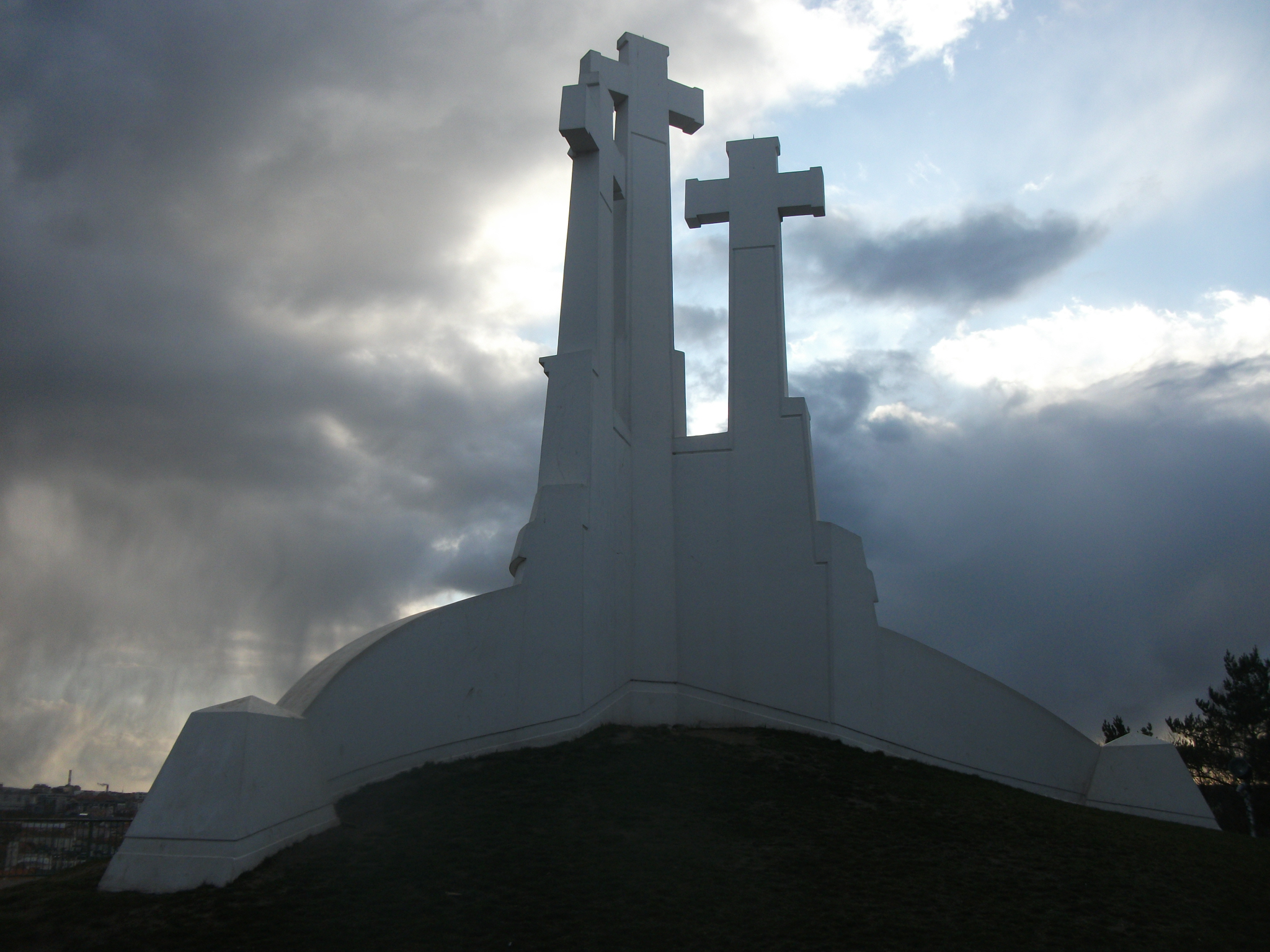Views: 343
 Three crosses are believed to have first been erected on this hill above the Old Town of Vilnius in the 17th century to commemorate a group of 14 Franciscan monks from a nearby monastery who were martyred in the 14th century
Three crosses are believed to have first been erected on this hill above the Old Town of Vilnius in the 17th century to commemorate a group of 14 Franciscan monks from a nearby monastery who were martyred in the 14th century
 The monument has changed several times. The present one was built in 1989 to replace one that had been removed by the Soviet authorities in the 1950s
The monument has changed several times. The present one was built in 1989 to replace one that had been removed by the Soviet authorities in the 1950s
 One of the best panoramic views of the Old Town of Vilnius is offered from the Hill of Three Crosses
One of the best panoramic views of the Old Town of Vilnius is offered from the Hill of Three Crosses
All photos are copyrighted by Vladislav B. Sotirovic
© Vladislav B. Sotirovic 2020
RELATED POSTS
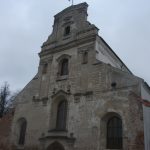
The church is Gothic, with some Baroque forms that it acquired in the late 18th centuryIn 1812 the church was partly destroyed by the French army that used it as a granary. Since 1864 the church was closed and converted into an archive The church adjoins a monastery, the oldest in Lithuania, whose construction began in Gediminas' times (in 1334)All photos are copyrighted by Vladislav B. Sotirovic© Vladislav B. Sotirovic 2018
Continue Reading
The Town Hall hosted a court, archive, weapons depository, as well as a prison for artisans that had broken the law. Burgomasters also held meetings in the Town Hall, as did the Council of Merchants Since 1991, Vilnius Old Town Hall once again is functioning as a place for holding important events like art exhibitions, concerts, conferences, meetings, etcIn the Middle Ages, the Town Hall Square was a place where physical punishment was carried out. There were gallows and a scaffold nearby, where executions were carried outAll photos are copyrighted by Vladislav B. Sotirovic© Vladislav B. Sotirovic 2019
Continue Reading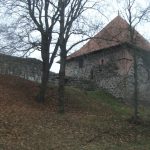
Lithuanian Grand Dukes Švitrigaila and Žygimantas Kęstutaitis resided in the Trakai Peninsula Castle. The first castle was made of wood. Later it was made with brick and had 10 defensive towers that were joined by a wall that was 10 meters highIn 1655 during wars with Russia and Sweden, the Trakai Peninsula Castle was destroyed and not rebuilt A few sections of the wall survived, while the southern tower of the Trakai Peninsula Castle was rebuilt. Medieval fairs were held in the courtyardAll photos are copyrighted by Vladislav B. Sotirovic© Vladislav B. Sotirovic 2019
Continue Reading
One of the focal touristic attractions in the Žvėrynas district of Vilnius is the traditional type of the wooden houses coloured in different coloursŽvėrynas means "menagerie" or "beastland". In the 19th century a forest grew in this areaSince 1893, the process of urbanization of the district of Žvėrynas started with the building of wooden and brick villas and summerhouses. Today, this district of Vilnius is a prestigiuos residential part of the capitalAll photos are copyrighted by Vladislav B. Sotirovic© Vladislav B. Sotirovic 2020
Continue Reading
Mindaugas Bridge is constructed in 2003. It has the name of the only Lithuanian King crowned on July 6th, 1253On the foothill on the left riverside of Neris, there is a Renaissance building of Old Arsenal followed by the buildings of House of the Castle Keeper and New Arsenal On the right riverside of Neris, a new business center of Vilnius is growing during the last two decadesAll photos are copyrighted by Vladislav B. Sotirovic© Vladislav B. Sotirovic 2019
Continue Reading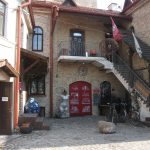
Užupio street is the main street in the city's district of Užupis. The district was in the Soviet time one of the most dilapidated districts in Vilnius. Many of the buildings did not have electricity and sanitary facilities, and the streets were unlitThe River Užupis which separates Užupis district from the Old Town. On one side of the river is a unique ensemble of sacred buildings and a park, while on the other side is "Republic of Užupis", where a number of artists live and work"Angel of Užupis" sculpture. An angel is playing a trumpet that provides ideas about Užupis to others and protects the district. The 24th Article of the Constitution of Užupis, for instance, says that "Everyone has the right to understand nothing". The district is separated from the Old Town by the River Vilnia on three sides, and by a high hill on the fourth sideAll photos ...
Continue Reading
Alumnatas Courtyard was the location for the student dormitory of a pontifical seminary in which seminary students (alumni) and future Greek Catholic (Uniate) priests lived. The courtyard is located in the Monastery Quarter of Vilnius very close to the Old Campus of Vilnius University and Presidential Palace (Prezidentura). Alumnatas (the Greek Catholic/Uniate) Courtyard in probably the most impressive and beautiful courtyards in Old Town of VilniusIn the mid-17th century, the courtyard was remodelledin an Italian Renaissance style , along with a chapelLater the buldings around Alumnatas Courtyard passed to Vilnius UniversityAll photos are copyrighted by Vladislav B. Sotirovic© Vladislav B. Sotirovic 2018
Continue Reading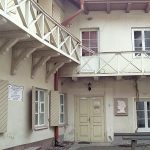
In this house, belonging at the time to a university professor, Adam Mickiewicz stayed for a short period in 1822 and completed the poem "Gražina"It is small museum of three rooms but it is currently being expended. Among the exhibits are several portraits of Adam Mickiewicz and some period furniture, including a table and chair from Kaunas and a chair from Paris that the poet himself usedThe exhibition includes among the many volumes of his work in foreign languages, for instance, a Persian translation of his "Sonnets from the Crimea" All photos are copyrighted by Vladislav B. Sotirovic© Vladislav B. Sotirovic 2020
Continue Reading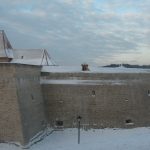
The Bastion is comprised of a tower, cannon room and 48 m. the long corridor connecting it with the towerThe walls and moats of the Bastion were excavated in 1965-1970, and the canon room was renovated in 1985-1986 The entire Bastion is converted into a museum, and since 1987 it houses an exhibition of defensive fortifications and weaponryAll photos are copyrighted by Vladislav B. Sotirovic© Vladislav B. Sotirovic 2019
Continue Reading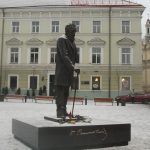
A monument to dr. Jonas Basanavičius in Vilnius in front of the building of the Lithuanian National PhilharmonicDr. Jonas Basanavičius chaired the session of Lithuanian Council that adopted the Act of Independence of Lithuania on 1918-02-16. He was the first to sign the Act of the Proclamation of the Lithuanian IndependenceBalancing between Lithuanian and Polish interests, he refused to participate in the opening of the Polish Stefan Batory University (today Vilnius University)All photos are copyrighted by Vladislav B. Sotirovic© Vladislav B. Sotirovic 2020
Continue Reading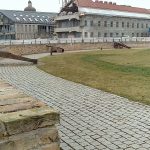
The architect of the Vilnius Bastion is unknown. The building that rose in the early 17th century is attributed to the period of late Renaissance and in that period Vilnius did not have a municipal architectThe wars of the mid-17th century and the 18th century weakened the military power of the Grand Duchy of Lithuania. The army led by the Russian Emperor Aleksey Mikhailovich approached Vilnius in August 1655 and seized the cityWhen Vilnius was liberated in 1660, the city's defensive fortifications needed repair. However, there was not enough funds and the citizens were unable to maintain defensive fortifications, supply them with arms and gunpowder and provide securityAll photos are copyrighted by Vladislav B. Sotirovic© Vladislav B. Sotirovic 2020
Continue Reading
Cathedral Basilica of St. Stanislaus and St. Vladislaus in Vilnius. Today the Cathedral Basilica is in the Classicist style as it was redisigned in 1783-1801 by Lithuanian architect Laurynas Gucevičius Baroque-style Cathedral's St. Casimir's Chapel built in 1610-1632 for holding the remains of St. Casimir (declared in 1604 by Pope Clemens VIII as the saint Cathedral Basilica Bell Tower. It is rebuilt tower that was part of the defensive wall that encircled the Lower CastleSaveAll photos are copyrighted by Vladislav B. Sotirovic© Vladislav B. Sotirovic 2018
Continue Reading
Tour № 1 – Šventaragis ValleyCathedral Basilica of St. Stanislaus & St. VladislausCathedral Basilica of St. Stanislaus & St. Vladislaus (inside, including the Chapel of St. Casimir, the Chapel of Deportees, the Gasztołd Chapel, the Royal Chapel, St. Wladislaw/Vladislaus/Ladislav Chapel, High alter, Memorial plague to the Grand Duke of Lithuania Vytautas Magnus, the Sapieha Madona’s picture, etc)Cathedral Basilica Bell TowerRoyal Palace of Lithuania (the Palace of Grand Dukes of the Grand Duchy of Lithuania)Upper CastleUpper Castle’s West (Gediminas) TowerOld Arsenal – Museum of Applied ArtNew Arsenal – Lithuanian National MuseumMonument to King Mindaugas (1236-1263: Crowned King on July 6th, 1253)Monument to Lithuanian Grand Duke Gediminas (1316-1341: the founder of Gediminian-Jagiellonian ruling dynasty)Tour № 2 – Vilnius University & Monastery QuarterVilnius University – Historical Campus (est. 1579)Vilnius University – the Bronze door of the Central LibraryVilnius University – Historical Campus (inside, including 12 university’s courtyards, Domus Philologiae, Smuglevičius Hall, White (Observatory) ...
Continue Reading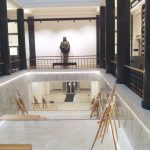
One of the meeting rooms in the library for public lectures, book presentations and discussionsOne of the exibition hallsOne of the Reading RoomsAll photos are copyrighted by Vladislav B. Sotirovic© Vladislav B. Sotirovic 2020
Continue Reading
Martynas Mažvydas National Library of Lithuania is a national cultural institution open to all users, active in the areas of dissemination of information, culture, science, and education, performing library activities and ensuring implementation of the national information policy falling within its competence The mission of the library is to be the Lithuanian space of knowledge-creating value for the public The vision of the library: to become an integral part of the state's information policy, culture, education, science, and economic progressAll photos are copyrighted by Vladislav B. Sotirovic© Vladislav B. Sotirovic 2019
Continue Reading
Christmas Tree decoration at the Cathedral Basilica Square in Vilnius. The belfry is seen in the backgroundChristmas decoration in front of the principal building of the castle complex in Vilnius Old Town - Cathedral BasilicaCathedral Basilica of Vilnius is erected on the place of the pagan altar with a ceasred fire to the pagan god Perkūnas (god of Thunder)All photos are copyrighted by Vladislav B. Sotirovic© Vladislav B. Sotirovic 2019
Continue Reading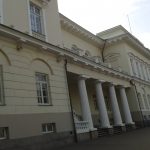
The main façade of the Presidential Palace (Prezidentura) in Vilnius at Simonas Daukantas SquareThe presidential coat-of-arms is adorning the entrance to the President's Chancellery on University StreetThe Inner Courtyard of the Presidential Palace - the palace of the President of the Republic of Lithuania since 1997All photos are copyrighted by Vladislav B. Sotirovic© Vladislav B. Sotirovic 2018
Continue Reading
The Church of the Heart of Jesus is a significant monument of Baroque (finished in 1756). It is the only Roman Catholic church in Lithuania to be built along a Greek Orthodox cross designThe church has a large octagonal cupola (dome) and a very reach the elegant exterior. The interior is no less magnificent, although it was severely damaged during the Soviet timeAfter 1945, a prison was established in the church and convent buildings. The church interior and the plan of the convent buildings were transformed. After 1990, the sacral buildings are returned to their former ownersAll photos are copyrighted by Vladislav B. Sotirovic© Vladislav B. Sotirovic 2020
Continue Reading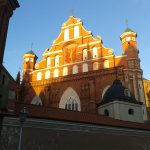
The main altar with Late Baroque forms, made from dark woodInterior of Church of St. Francis and St. BernardineWhile restoring the church, one of the largest mural paintings from the Late Gothic and Renaissance periods was discovered. They depict scenes from the Bible, Franciscan legends and symbolic imagesAll photos are copyrighted by Vladislav B. Sotirovic© Vladislav B. Sotirovic 2020
Continue Reading
Until the 15th century, the castle was the residence of the Lithuanian Grand Dukes. The complex was built from the beginning of the 14th century to the beginning of the 15th century The castle is comprised of two parts - the bailey and the residential palace, which is divided by a canal, which at the same time was filled with lake waterThe castle is surrounded in a circle by a two-story wooden galleryAll photos are copyrighted by Vladislav B. Sotirovic© Vladislav B. Sotirovic 2018
Continue ReadingChurch of the Assumption of the Holy Virgin Mary and the Franciscan Monastery
Vilnius Old Town Hall
The Trakai Peninsula Castle
Traditional Wooden Houses in Žvėrynas
Vilnius Panorama of the Neris River
“Republic of Užupis”
Alumnatas Courtyard
The Adam Mickiewicz Museum
The Bastion of the Vilnius Defensive Wall (I)
Jonas Basanavičius Monument in Vilnius
The Bastion of the Vilnius Defensive Wall (II)
Cathedral Basilica of St. Stanislaus and St. Vladislaus
Vilnius – Guided Sightseeing Tours
Martynas Mažvydas National Library of Lithuania (Inside)
National Martynas Mažvydas Library
Vilnius Christmas Tree
Presidential Palace
Church of the Heart of Jesus and the Convent of the Visitationists in Vilnius
Church of St. Francis and St. Bernardine (Interior)
Island Castle of Trakai

